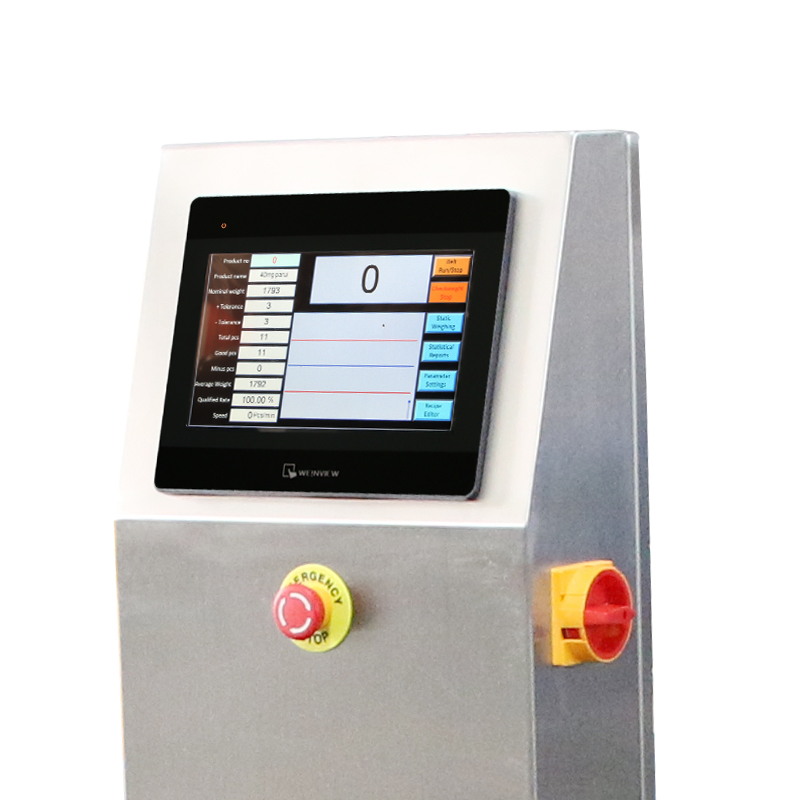Checkweigher Purchasing Guide
The Critical Role of Checkweighers in Precision Weighing and Compliance**
Checkweighers play a pivotal role in ensuring accurate product weights and adherence to industry packaging standards. This section unveils the significance of checkweighers in preventing profit loss and costly penalties by maintaining precise weight measurements in line with regulations.
Guide 1 - Selecting the Right Checkweigher System**
Choosing the appropriate checkweigher system is the first step in the purchasing journey. This guide delves into the classification of checkweighers into static and dynamic categories. Static checkweighers are explored for measuring stationary items, conducting spot-checks, determining target weights, and aiding in compliance tests. Dynamic in-motion checkweighers are highlighted for their automated weighing capabilities and the advantages they offer over static counterparts.
Guide 2 - Considering Product Characteristics**
This guide emphasizes the importance of considering product characteristics in the checkweigher selection process. Factors such as the size, weight range, height, shape, and footprint of the target objects are discussed. The overall precision of checkweighers is influenced by how well their characteristics align with the products being weighed.
Guide 3 - Evaluating Workshop Environment Situations**
Workshop environment conditions play a crucial role in the effectiveness of checkweighers. This guide provides insights into considerations such as temperature, debris, dust, noise, unwanted signals, air currents, electrical noise, cleanliness, and protection against dust and water penetration. Understanding and addressing these factors are essential for optimal checkweigher performance.
Guide 4 - Assessing Dynamic Automatic Production Line Capacity**
For industries with high-capacity production needs, this guide focuses on the importance of selecting high-speed checkweighers. The capacity requirements of dynamic automatic production lines are discussed, and the capabilities of Viking checkweigher machines, with speeds reaching up to 80m/minute, are highlighted as a suitable choice for large-scale operations.
Guide 5 - Exploring Checkweigher Rejection Systems**
The rejection system is a critical aspect of checkweighers, influencing the handling of non-compliant products. This guide introduces various rejection mechanisms offered by Viking checkweighers, including push rod rejection, flap drop rejection, air blast rejections, and arm turn rejection. Understanding these options aids in choosing the most suitable rejection system for specific production needs.
Guide 6 - Integrating Combination Systems for Enhanced Efficiency**
Some checkweighers come with combination systems, allowing integration with metal detection or X-ray systems. This guide explores the benefits of combining checkweighing with other inspection technologies. The space-saving advantages, minimized operation errors, faster product transitions, and reduced maintenance time and cost make combination systems an attractive option for enhancing overall production line efficiency.
Checkweigher Purchasing Guide - Navigating Informed Decisions for Optimal Performance**
In conclusion, the Checkweigher Purchasing Guide serves as a comprehensive resource for making informed decisions in the selection and integration of checkweighers. From understanding the types of checkweigher systems to considering product characteristics, evaluating workshop environments, and exploring rejection systems and combination options, this guide empowers businesses to choose checkweighers that align seamlessly with their operational needs. Navigate the purchasing process with confidence, ensuring precision in weighing and compliance with industry standards.

Previous: Checkweigher FAQ

